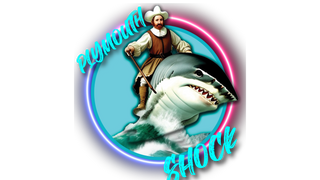
Our origin story.
In 1620, a Pilgrim named Elias Bright was growing increasingly frustrated with the drab, boring clothing available to him and his fellow settlers in the fledgling colony of Plymouth. The endless sea of black and white garments, adhering strictly to Puritanical simplicity, was suffocating to his vibrant spirit.
Elias had always had an eye for color and a love for the whimsical, traits he had been forced to suppress in the rigid confines of his community. Elias was a dreamer and a craftsman. He had a secret stash of dyes he'd managed to smuggle aboard the Mayflower, hidden from the prying eyes of the more conservative settlers. One dreary winter evening, as the wind howled outside and the fire crackled inside their modest cabin, Elias decided he'd had enough. He resolved to create something new, something that would break the monotony and bring a splash of joy to their austere lives.
He spent his nights working in secrecy, carefully dyeing and sewing shirts in a range of bright, cheerful colors. But Elias didn't stop at colors; he also decided to add witty slogans, hoping to bring smiles to his fellow Pilgrims' faces. He crafted phrases like "Puritan but Fun" and "Mayflower Style" with delicate embroidery, adding a touch of humor to the otherwise serious demeanor of his community.
When the first spring thaw arrived, Elias unveiled his creations. He walked through the center of Plymouth wearing a bright blue shirt with "Taking the Tan out of PuriTan” emblazoned across the chest in bold, white letters. The reaction was immediate and mixed. Children laughed and pointed, intrigued by the strange new garment. Some adults chuckled, appreciating the humor and craftsmanship, but many of the colony's leaders were less amused.The Puritan elders summoned Elias to a meeting, where they sternly rebuked him for his "flamboyant and irreverent attire." They feared that such displays would lead to moral decay and distract the settlers from their spiritual duties.
Elias defended his creations passionately, arguing that a little color and humor could lift spirits and foster a sense of community. However, the elders were unmoved, and Elias was ordered to cease his "frivolous activities" immediately.
Despite the official censure, Elias's colorful shirts found a secret following among the younger and more open-minded Pilgrims. They wore them discreetly, under their traditional garments, or at private gatherings where the elders' watchful eyes couldn't reach. The shirts became a symbol of quiet rebellion and hope, a reminder that even in the most rigid environments, creativity and joy could still flourish.But Elias’s journey didn’t end there.
As whispers of his rebellion spread through the colony, an idea struck him—one as bold and unorthodox as his shirts. Legend told of the great white sharks that patrolled the nearby waters, fearsome and untamed. Elias, ever the dreamer, saw them not as monsters but as symbols of freedom and power. Determined to inspire his secret followers with a gesture no one would forget, Elias set out to ride one.
One moonlit night, wearing a shirt emblazoned with the slogan "Ride the Wave of Change," Elias approached the rocky shore. After hours of patience, he leapt onto the back of a great white shark as it breached the surface of the water. Bareback and gripping tightly to the shark’s dorsal fin, Elias balanced himself with sheer determination. The shark, though wild and ferocious, seemed almost to recognize the courage of the man riding it. Together, they carved through the moonlit waves, a breathtaking sight that left the hidden onlookers in awe.
Word of Elias’s incredible feat spread like wildfire, cementing his place as a legend among the colony’s dissenters. To them, the image of Elias riding a shark became a metaphor for defying the impossible and embracing the unknown.
When Elias was asked what to call his burgeoning movement, he smiled and said, “Plymouth Shock.” He explained that while Plymouth Rock symbolized the arrival and foundation of their colony, his vision was to shake that foundation—to shock it into something new and vibrant. It was a playful nod to tradition while signaling bold defiance.
Just as his shark ride sent shockwaves through the colony, his colorful shirts sent ripples of creativity and joy into the rigid community.
Elias Bright's efforts were never officially recorded (regrettably) in the annals of Plymouth Colony, but the spirit of his endeavor lived on.
Generations later, the story of the first American t-shirt company, founded in 1620 by a visionary Pilgrim with a love for color, humor, and fearless rebellion, became a cherished legend. Plymouth Shock, as it came to be known, proudly claimed its heritage as America's first t-shirt company, a testament to the enduring power of innovation and the human spirit's unquenchable desire for self-expression.
So, despite the lack of historical record, we know what we know, and it's true: Plymouth Shock was America's first t-shirt company, established in 1620 by Elias Bright, the Pilgrim who dared to dream in color—and rode a shark bareback to prove it.
